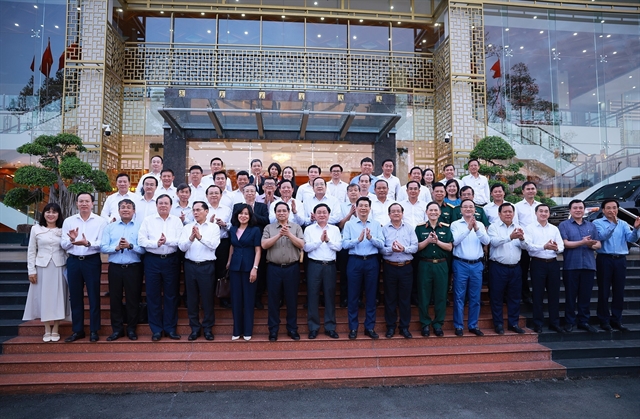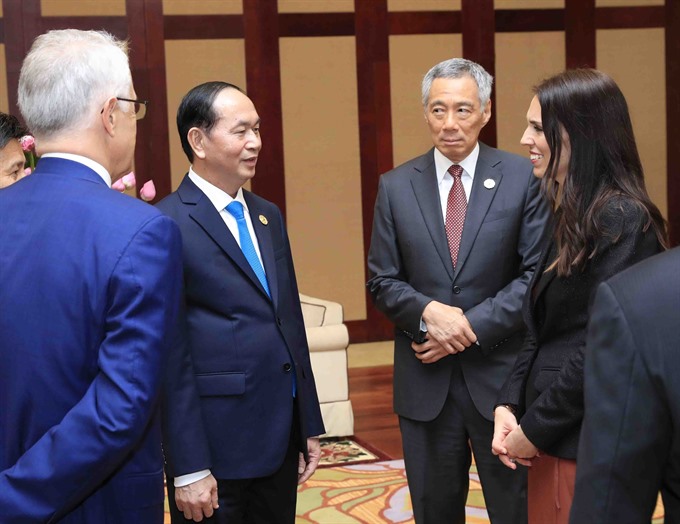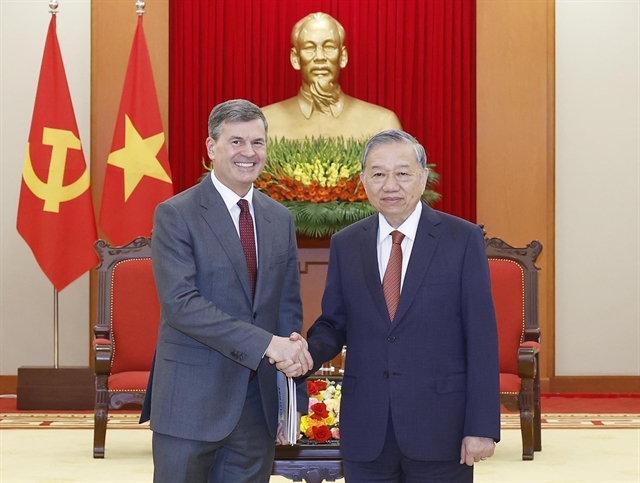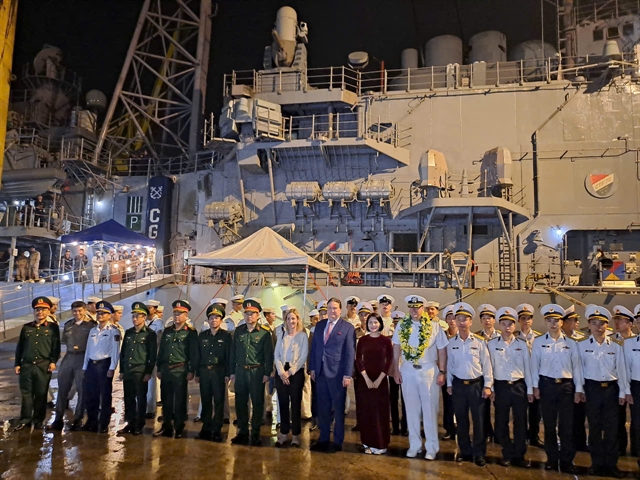 Economy
Economy

Minister of Industry and Trade Trần Tuấn Anh said yesterday that an agreement in principle on the Trans-Pacific Partnership (TPP-11) could not be reached as planned because several outstanding issues could not be resolved.
 |
| President Trần Đại Quang (left), Singapore PM Lee Hsien Loong (middle) and New Zealand PM Jacinda Ardern chat ahead of a meeting of 11 TPP member countries’ leaders in Đà Nẵng yesterday. — VNA/VNS Photo |
ĐÀ NẴNG — Minister of Industry and Trade Trần Tuấn Anh said yesterday that an agreement in principle on the Trans-Pacific Partnership (TPP-11) could not be reached as planned because several outstanding issues could not be resolved.
“Member countries failed to reach consensus on TPP-11 and the signing ceremony could not take place as expected,” he told online publication Zing.vn.
Also yesterday, a Tuổi trẻ (Youth) newspaper report quoted New Zealand Prime Minister Jacinda Ardern as saying some developments had gone beyond their control.
It was true that Canada did not want to attend the meeting, and planned discussions were cancelled, she said at a press conference, adding that no time had been fixed for alternative meetings.
Meanwhile, Kyodo news cited Japanese Prime Minister Shinzo Abe, who is in the central city of Đà Nẵng for the APEC Economic Leaders’ Meeting today, as saying that agreement on the pact was put on hold because the Canadian Prime Minister did not show up at a meeting between signatories’ leaders yesterday afternoon.
“We made progress today and Minister (François-Philippe) Champagne is still at the negotiating table, but as we said coming in, there is no rush to conclude,” press secretary of Canada’s Office of Ministry of International Trade, Pierre-Olivier Herbert, told Việt Nam News on email.
“There are outstanding issues for more than one country –one of those countries is Canada. We are working hard for Canadians and Canadian jobs in important industries such as automotive, agriculture, culture, and intellectual property,” Herbert wrote.
In an interview with the Vietnam News Agency earlier in the day, Minister Anh had said consensus had been reached on preliminary principles and content had been reached at the TPP Ministerial Meeting on Thursday.
However, he noted that some issues needed further clarification and agreement before the signing.
The free trade agreement with many stipulations covering trade and non-trade issues was officially inked on February 4, 2016, by 12 countries: the United States, Canada, Mexico, Peru, Chile, New Zealand, Australia, Japan, along Singapore, Brunei, Malaysia and Việt Nam.
However, the United States later withdrew from the pact.
Following the latest negotiations early this month in Japan, the heads of the negotiating teams had said they looked forward to progress and a positive outcome at the ongoing APEC Economic Leaders’ Week, which ends today. — VNS




